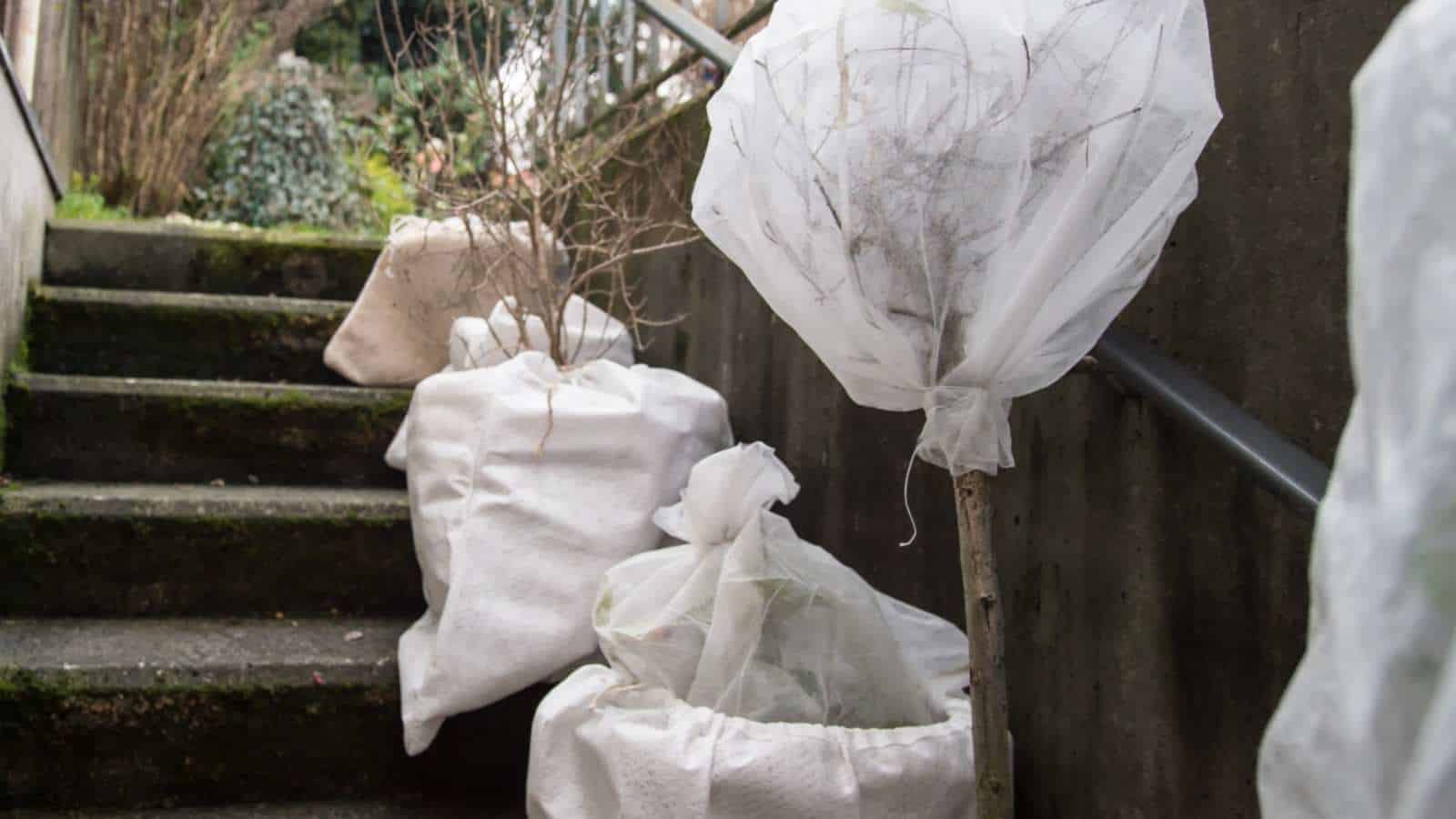One of the simplest ways to keep up potted crops from freezing is a vital capability for all gardeners. Inside the chilly winter months, one in all many largest challenges for yard fanatics is defending their beloved potted crops from freezing temperatures.
The chilly can wreak havoc in your greenery, inflicting hurt and even killing your crops if not appropriately cared for. This article will info you on how one can preserve your potted crops protected and thriving whatever the frosty local weather.
Potted crops are considerably inclined to freezing as their roots are a lot much less insulated compared with these throughout the flooring. The chilly can penetrate the pots and freeze the roots, ensuing within the dying of the plant.
Nonetheless, with the becoming info and just a bit effort, you probably can defend your crops from the merciless winter and preserve them healthful.
Whether or not or not you are a seasoned gardener or a beginner, this info gives you wise and easy-to-follow steps to protect your potted crops from freezing. Let’s dive into it and guarantee that your crops survive the winter chill.
How To Defend Vegetation From Frost – Which Vegetation To Defend
As a gardener, frost could also be your worst enemy, inflicting hurt to your beloved crops. Nonetheless, with the becoming info, you probably can defend your inexperienced associates from the merciless chilly.
Firstly, it’s vital to find out which crops need security. Tender crops like begonias, geraniums, and impatiens are terribly susceptible to frost hurt. Equally, tropical crops, citrus timber, and positive greens like tomatoes and peppers moreover require additional care all through frosty durations.
Defending these crops contains quite a few strategies. One simple methodology is to cowl them with a frost materials or blanket at night, which traps heat and retains the plant warmth. Take away the quilt in the middle of the day to allow daylight in. One different technique is to water your crops completely sooner than a frost, as moist soil retains heat increased than dry soil.
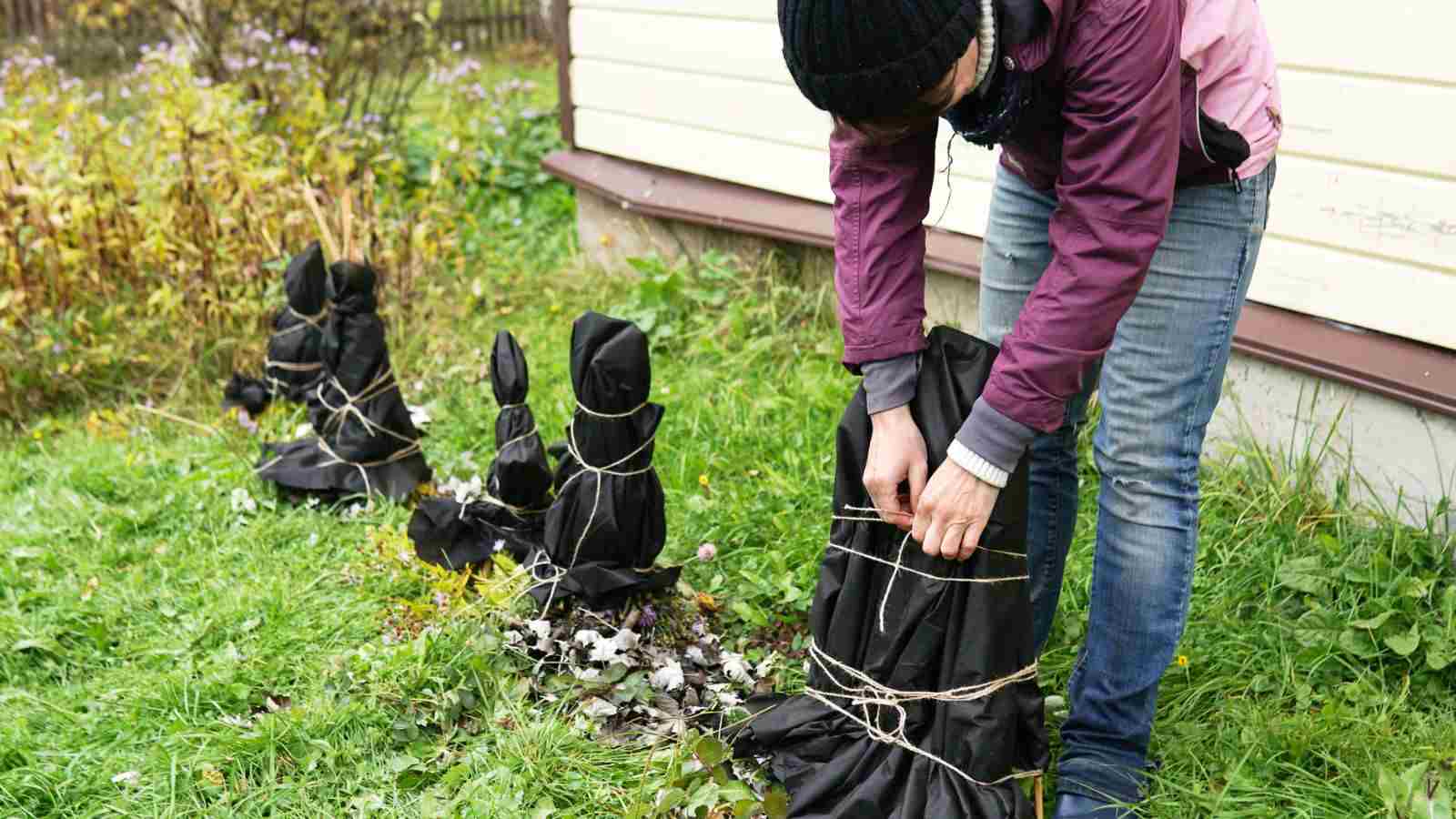
Keep in mind, every plant is unique and would require fully totally different care. On a regular basis evaluation the actual needs of your crops and modify your frost security strategies accordingly. With the following tips, you probably can assure your yard thrives even throughout the chilliest circumstances.
1. Carry Potted Vegetation Indoors
Winter could also be harsh in the one you love potted crops. The freezing temperatures outside can hurt and even kill them. Nevertheless don’t worry, there’s a simple decision to protect your inexperienced associates from the chilly – carry them indoors!
Start by choosing the right spot inside your non-public dwelling. It must be a spot with enough daylight, as most crops need it to thrive. Steer clear of spots near heaters or drafts, as sudden temperature changes can damage them.

Subsequent, clear your crops. Use a mushy materials to wipe off the mud from leaves and confirm for pests. You truly don’t want to carry bugs inside your non-public dwelling.
Lastly, take into consideration the pot’s dimension and weight. If it’s too heavy to maneuver, you will have to repot the plant into one factor additional manageable.
Keep in mind, it’s essential to acclimate your crops to the indoor setting progressively. Start by bringing them in at night, then progressively improve the time they spend indoors.
2. Add A Layer Of Mulch On Yard Beds
As a grasp gardener, I can’t stress enough the importance of mulching your yard beds, significantly when the temperature begins to dip. Mulch acts as an insulator, trapping heat and moisture throughout the soil, which is important to protect your crops from freezing circumstances.
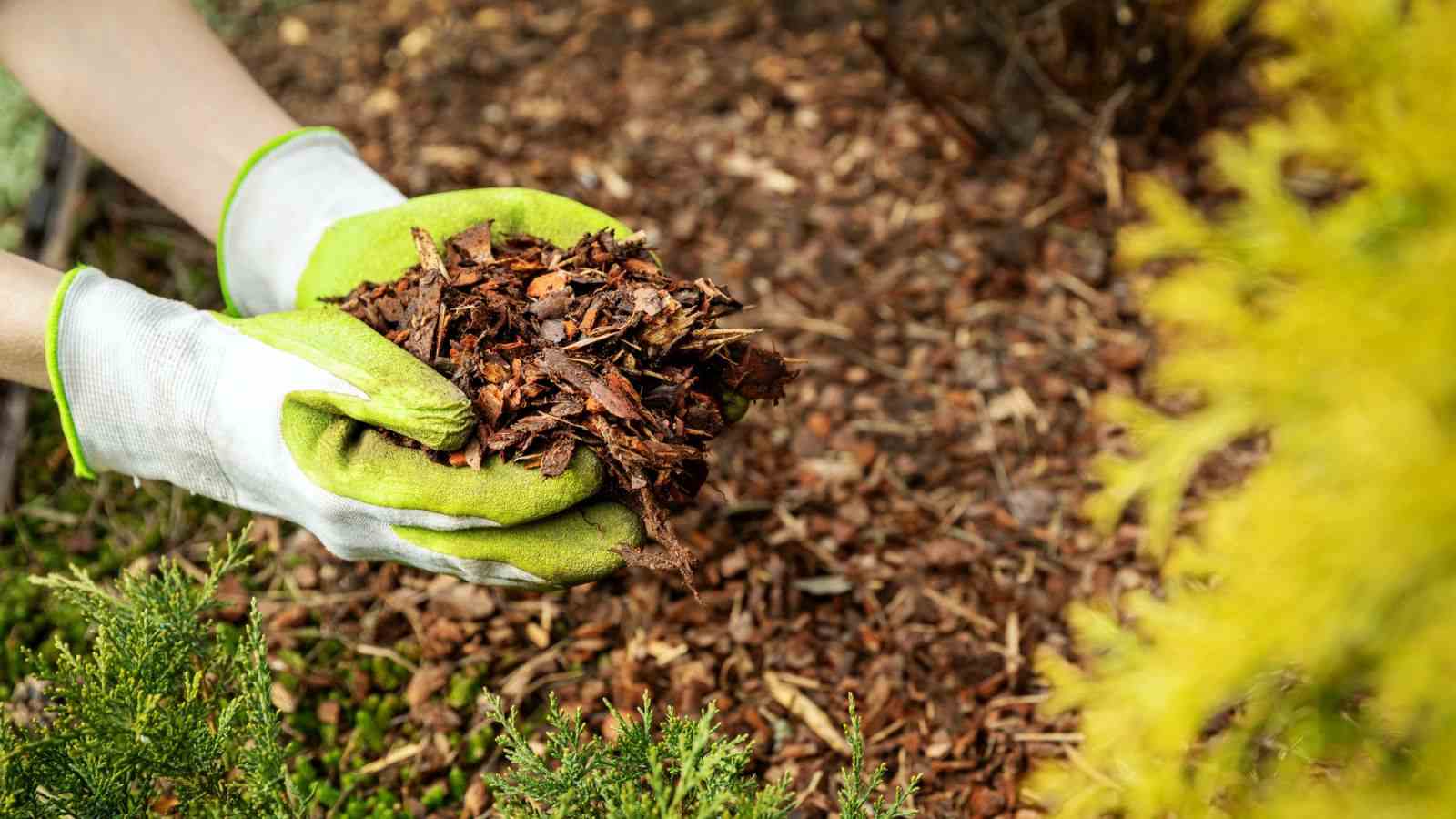
Start by clearing any particles out of your yard beds. As quickly as cleaned, apply a generous layer of mulch, roughly two to 4 inches deep. This layer creates a barrier between the chilly air and the soil, stopping the underside from freezing. It moreover helps to retain moisture, reducing the need for watering throughout the winter months.
The type of mulch you choose can vary. Pure mulches like straw, shredded bark, or compost are superb picks as they not solely defend your crops however moreover enrich your soil as they decompose.
So, this winter, don’t let your laborious work freeze away. Add a layer of mulch to your yard beds and preserve your crops thriving throughout the chilliest of local weather. Keep in mind, a well-mulched yard is a contented yard!
3. Cowl Vegetation With Fleece
As a grasp gardener, I can’t stress enough the importance of defending your beloved crops from harsh winter temperatures. One environment friendly methodology is to cowl them with fleece. This simple act often is the distinction between a thriving yard and a frozen wasteland.
Fleece is a lightweight, breathable supplies that offers an outstanding barrier in direction of frost. It permits daylight and rain to realize the crops whereas defending them insulated.
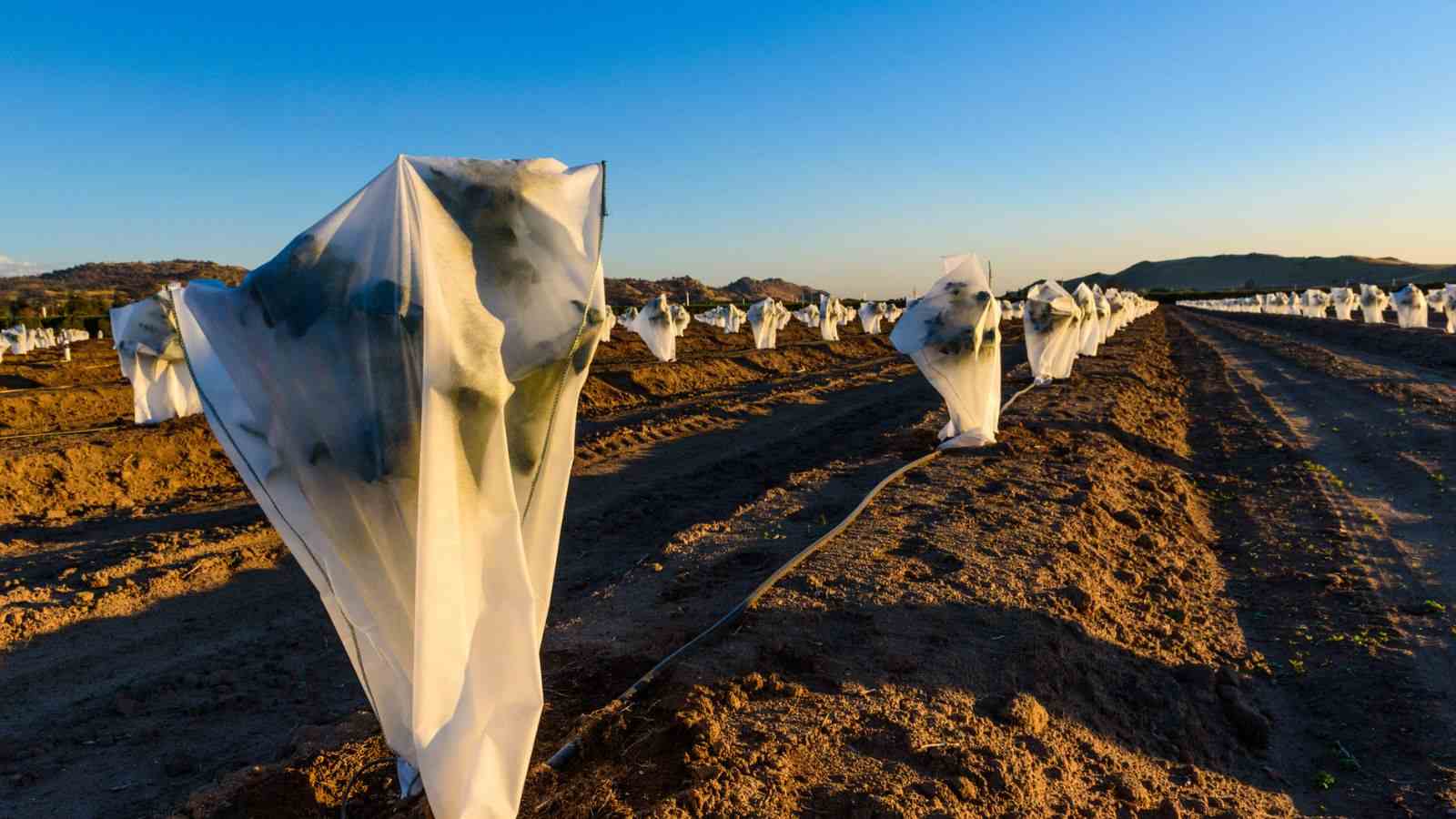
The strategy is straightforward. Merely drape the fleece over your crops, guaranteeing they’re totally coated. Use stakes or weights to protected the fleece, stopping it from blowing away in sturdy winds.
Keep in mind, the target is to create a warmth microclimate in your crops, to not smother them. Resulting from this truth, steer clear of tying the fleece too tightly. Moreover, it’s vital to remove the fleece in the middle of the day if temperatures rise above freezing to forestall overheating.
So, don’t let your yard fall sufferer to the freezing chilly. Cowl your crops with fleece and preserve them thriving all yr spherical. Perception me, your crops will thanks for it.
4. Place Tender Vegetation In A Sheltered Spot
Gardening is a pleasure, nonetheless it may shortly become an issue when the temperature drops. Tender crops, these that are delicate to chilly, need specific care to survive freezing temperatures. One environment friendly method to defend these crops is by inserting them in a sheltered spot.
Uncover a location in your yard that is shielded from the merciless wind and the place daylight can nonetheless attain. This might probably be near a wall of your private home, beneath a tree, or in a particularly constructed yard shelter.
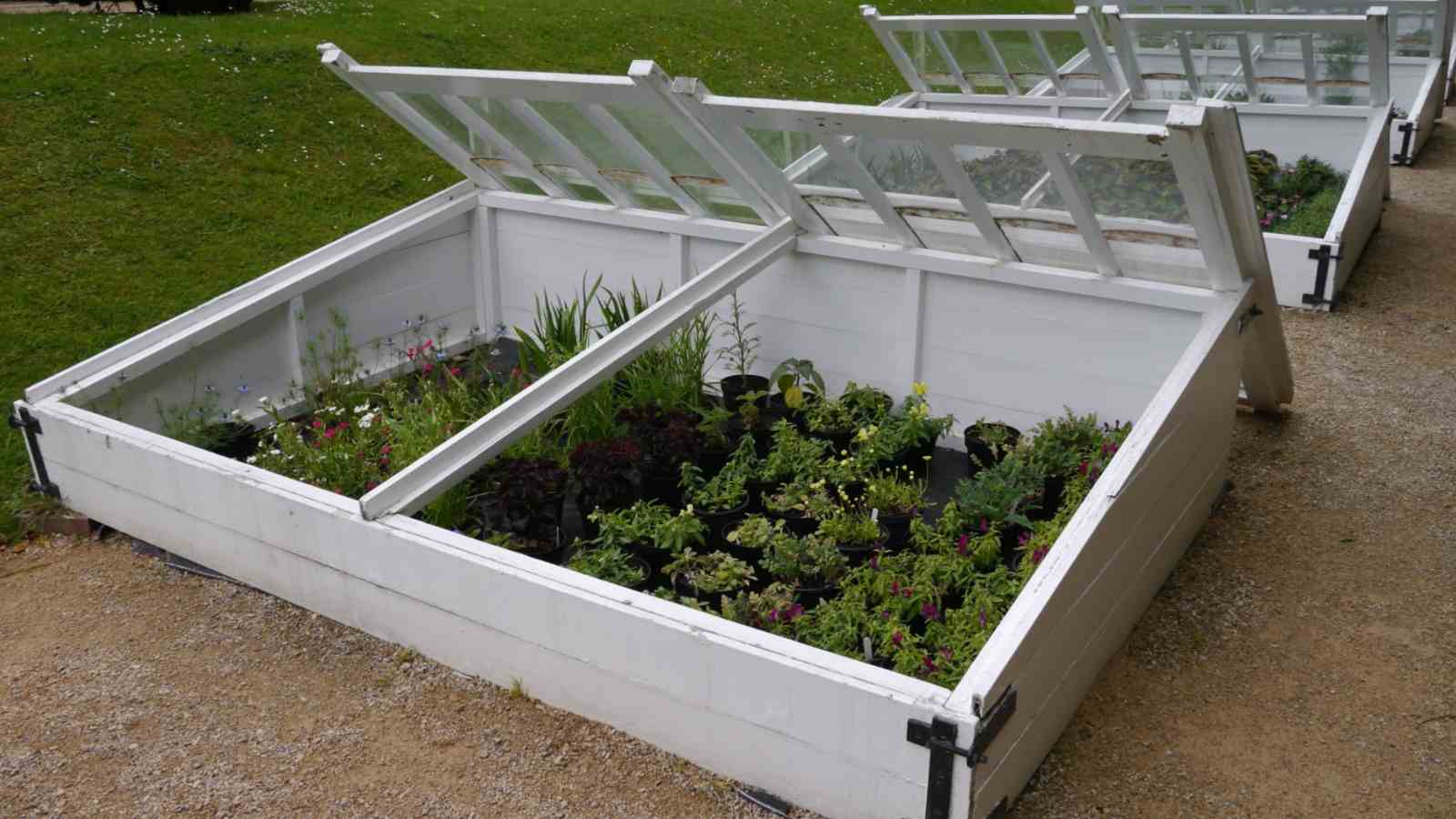
These spots can current a microclimate that might be a number of ranges hotter than the rest of the yard, which could make a serious distinction in your crops.
Deliberate to cowl your tender crops with a horticultural fleece or bubble wrap when a frost is forecasted. This offers a further layer of insulation, defending the chilly out and the warmth in.
Lastly, don’t neglect to water your crops. Moist soil retains heat increased than dry soil, serving to the roots maintain warmth.
With these steps, you probably can assure your tender crops survive the winter and proceed to thrive.
5. Increase And Retailer Tender Perennials
As winter approaches, it’s essential to protect your tender perennials from the freezing temperatures. These delicate crops, in distinction to their hardier counterparts, cannot survive the merciless chilly and need just a bit additional care to flourish the next season. The strategy contains lifting them from the underside and storing them in a warmer setting.
Start by gently digging throughout the plant, fastidiously lifting it to steer clear of damaging the roots. Shake off the excess soil and trim any ineffective or diseased foliage.
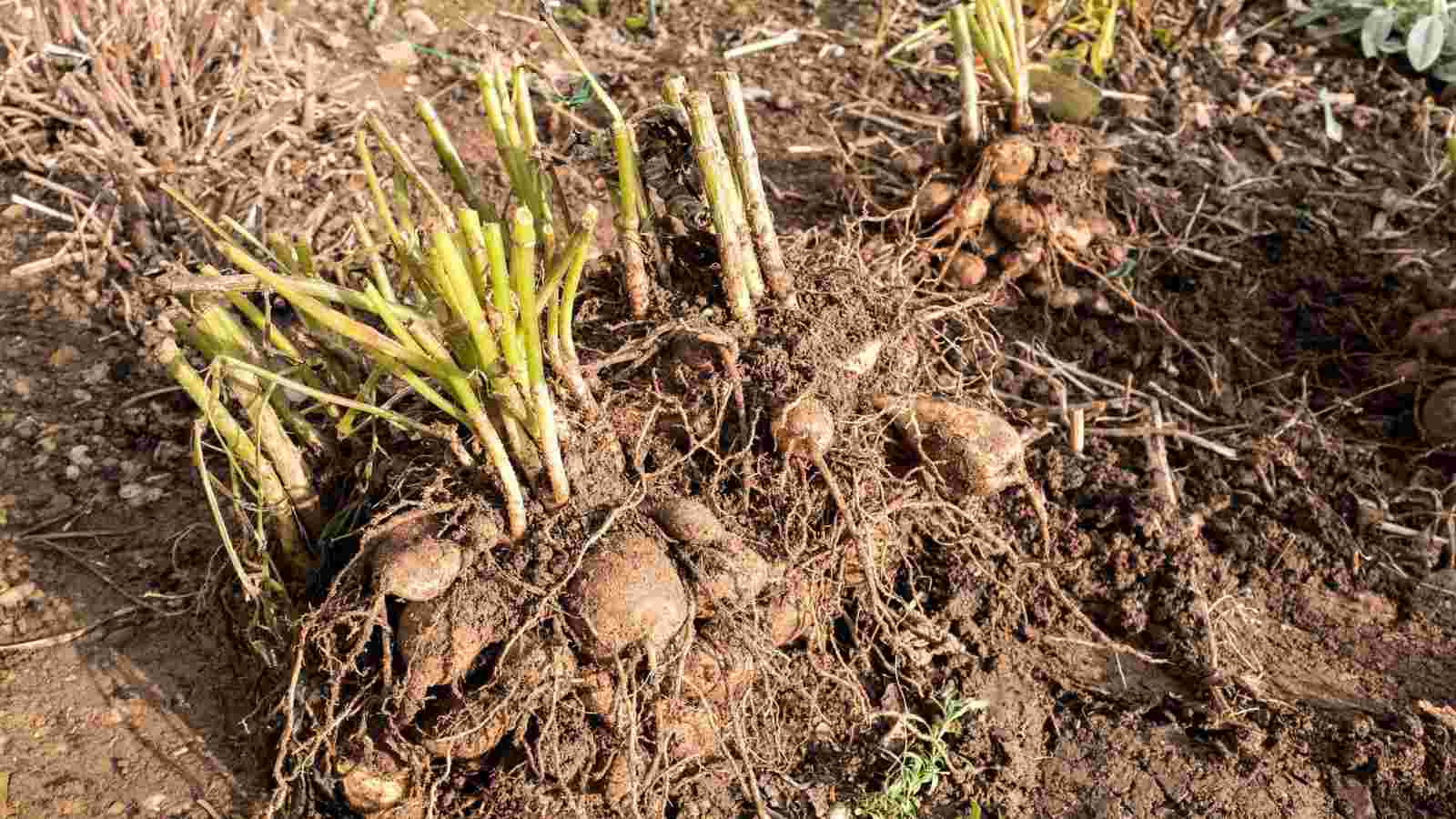
As quickly as lifted, it’s time to retailer your perennials. A cool, dry, and frost-free place like a storage or basement is true. Wrap the roots in newspaper or pack them in peat moss to keep up them from drying out.
Deliberate to confirm in your saved perennials periodically all by means of the winter. They should keep dormant nonetheless alive, in a position to be replanted when spring arrives.
With this simple however environment friendly methodology, you probably can assure your beloved tender perennials survive the winter and proceed to strengthen your yard’s magnificence throughout the coming seasons.
6. Defend Tender Vegetation
As a grasp gardener, I can’t stress enough how crucial it is to protect your tender crops from freezing temperatures. One environment friendly methodology is using a cloche.
A cloche is a bell-shaped cowl that you’d be capable to place over your crops. It acts as a mini greenhouse, trapping heat and moisture, and defending the plant protected against harsh local weather.
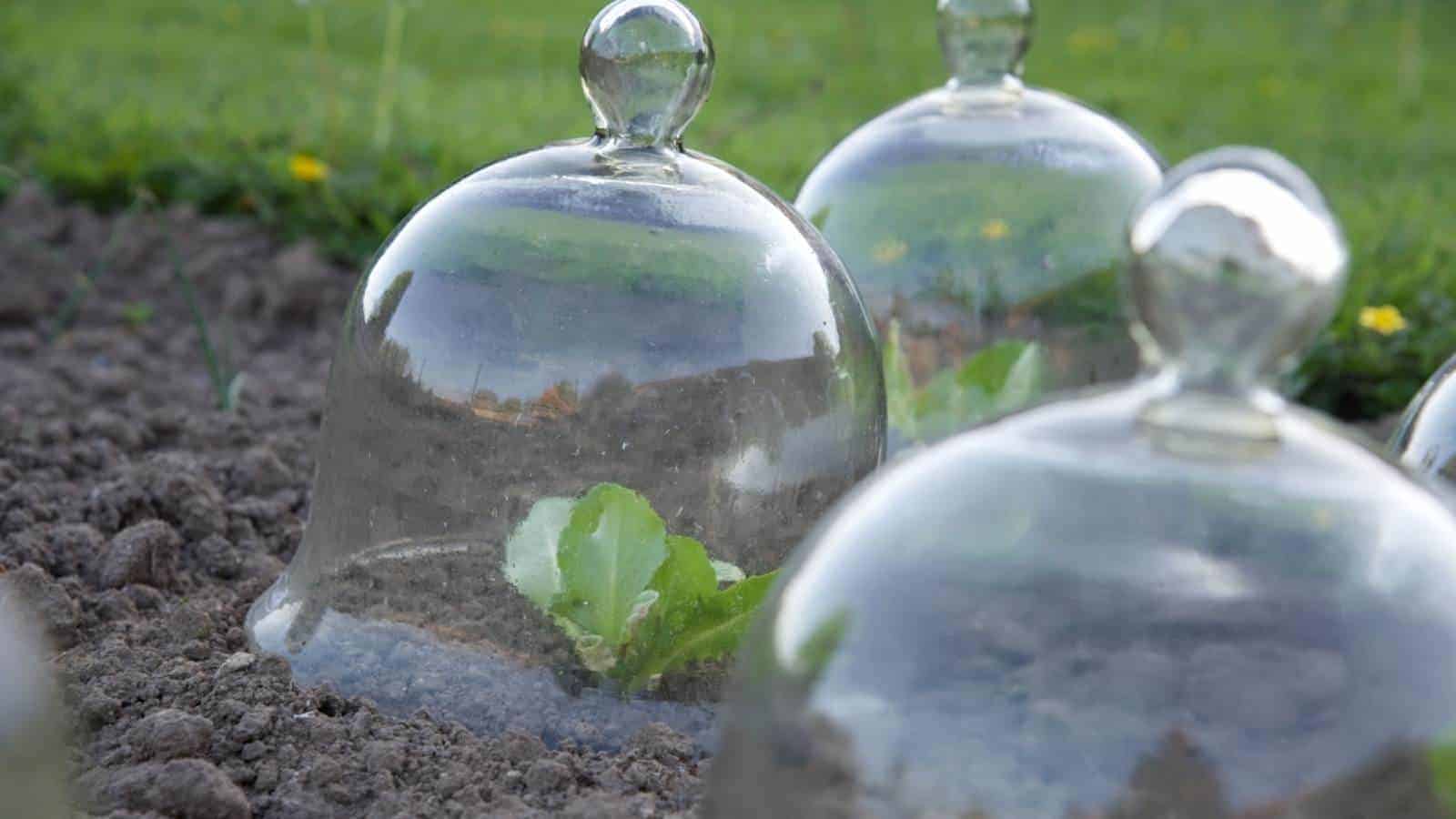
Cloches are significantly helpful for delicate crops that are delicate to chilly. They provide a warmth, managed setting that helps these crops thrive, even within the midst of winter.
Using a cloche is straightforward. Merely place it over your plant in the middle of the night or when the local weather forecast predicts a freeze. Deliberate to take away it in the middle of the day to forestall overheating and to allow your plant to acquire daylight.
7. Switch Vegetation Into A Chilly Physique
Defending your crops from freezing temperatures might be a troublesome course of, nonetheless a cold physique could also be your remaining decision. A cold physique is a bottomless discipline with a transparent excessive, usually product of glass or plastic. It acts as a miniature greenhouse, providing a warmer setting in your crops.

To utilize a cold physique, merely place it over your crops, and it will lure the photo voltaic’s heat in the middle of the day, defending your crops warmth at night. It’s an outstanding method to delay your rising season and defend your crops from harsh local weather circumstances.
Deliberate to ventilate your chilly physique in the middle of the day to forestall overheating and to close it at night to retain warmth. This simple switch may make a serious distinction in your plant’s survival all through freezing local weather.
8. Water Vegetation In The Morning
Watering your crops throughout the morning is an easy however environment friendly gardening strategy that will defend your beloved greens from freezing in the middle of the chilly season.

When you water your crops early throughout the day, the water has ample time to soak into the soil and attain the roots sooner than the temperatures drop at night. Do you have to water your crops later throughout the day, the water may freeze throughout the roots, inflicting hurt and inhibiting improvement.
Furthermore, morning watering reduces the evaporation cost, guaranteeing that your crops get the utmost revenue from each watering. It moreover helps to forestall the growth of fungus and totally different illnesses that thrive throughout the damp, cool circumstances created everytime you water throughout the evening.
So, make a conduct of watering your crops throughout the morning. It’s a small change that will make a large distinction throughout the nicely being and vitality of your yard.
9. Wrap Containers
Winter might be a troublesome time for yard fanatics. As temperatures drop, your beloved crops can succumb to the merciless chilly. Nevertheless don’t worry, wrapping your containers might be a game-changer, serving to to keep up your crops from freezing outside.
Container crops are additional susceptible to freezing on account of their roots are above flooring, uncovered to chilly air and winds. Wrapping containers is an environment friendly methodology to insulate plant roots and defend them from freezing temperatures. Provides like bubble wrap, hessian, and even outdated blankets might be utilized for this goal.
Start by wrapping the material throughout the pot, guaranteeing to cowl your whole container along with the underside. Protected it with twine or duct tape. This creates a barrier, trapping heat and stopping the chilly from penetrating. Deliberate to preserve the very best open for air circulation.
10. Select The Correct Containers
Selecting the becoming containers in your crops is a vital step in guaranteeing their survival all through freezing temperatures. The material of the container performs a serious place in defending the roots from the chilly.
Go for containers constituted of insulating provides similar to wood or thick plastic, as they provide increased security in direction of frost compared with skinny plastic or metal pots, which could shortly change the chilly.
Dimension can be an vital challenge. Larger containers preserve additional soil, and thus, present increased insulation. Nonetheless, they should have sufficient drainage to forestall waterlogging, which could exacerbate freezing hurt.
Ponder transferring your containers in direction of a warmth wall or proper right into a sheltered spot in the middle of the coldest durations. This may increasingly current additional security, reducing the hazard of freezing.
11. Elevate Your Vegetation
Winter is normally a dormant time for potted ornamental crops, so they might require a lot much less water. Resulting from this truth, saucers beneath the underside of the pot are pointless.
As a substitute, elevate your pots above the underside or flooring by inserting them on “pot toes” or bricks.
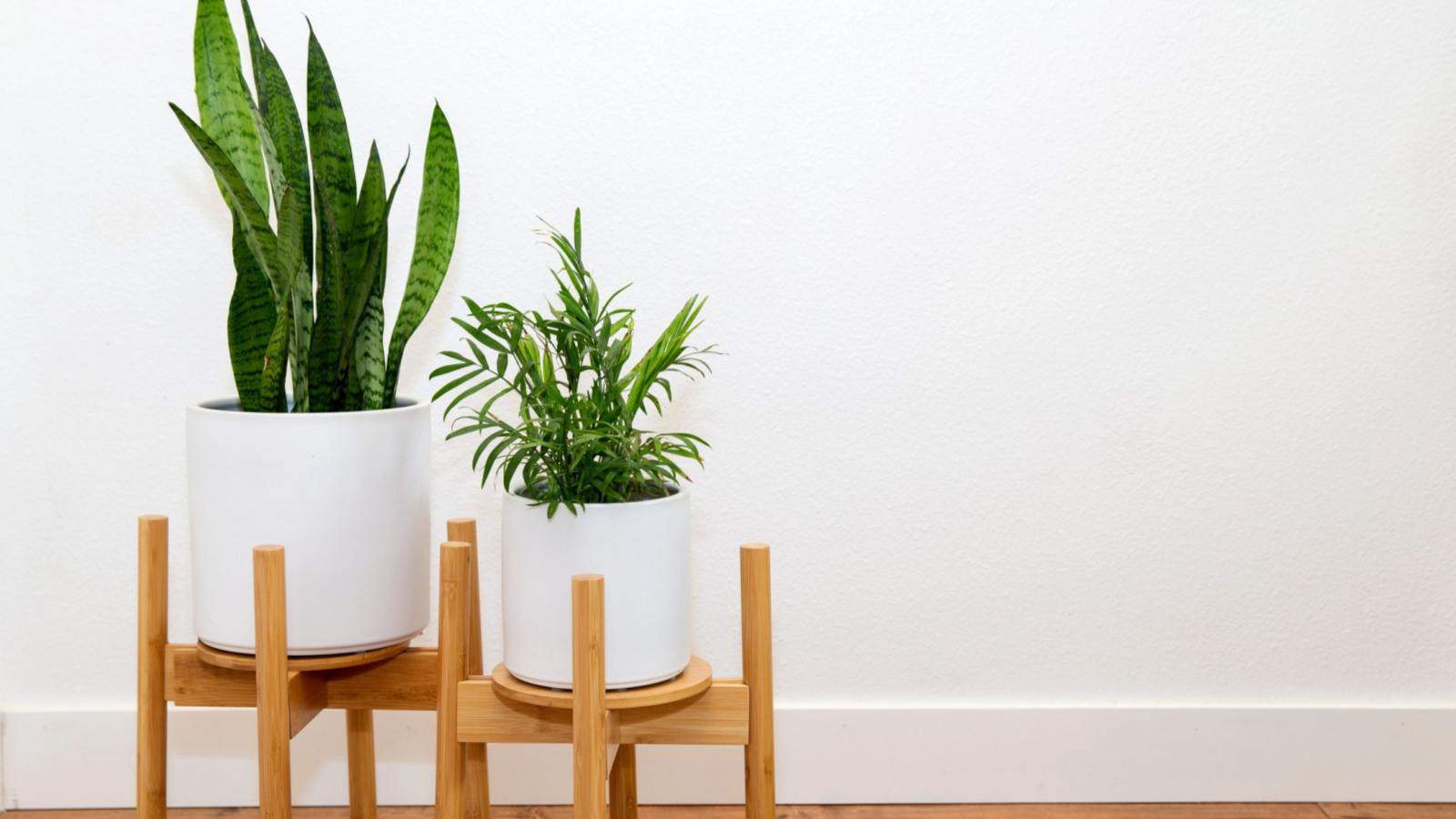
When temperatures drop, the water in saucers will freeze, obstructing the drainage holes and stopping water from draining. Constantly moist soil constantly causes root rot, a lethal plant sickness.
Regardless of the season, consider that you might want to preserve the water flowing to your potted crops in an effort to alleviate stress.
12. Choose The Correct Vegetation For Your Yard
Selecting the right crops in your yard might be a game-changer within the case of withstanding freezing temperatures.
It’s not practically aesthetics; it’s about survival. Some crops are additional resilient to chilly local weather than others. Start by researching crops native to your space as they’re naturally tailor-made to the native native climate.
Perennials like Hostas and Daylilies are unbelievable selections as they die once more in winter nonetheless return in spring. Evergreens similar to Boxwood and Yew can current year-round greenery, whereas shrubs like Hydrangeas and Rhododendrons present beautiful blooms and would possibly stand as much as chilly local weather.
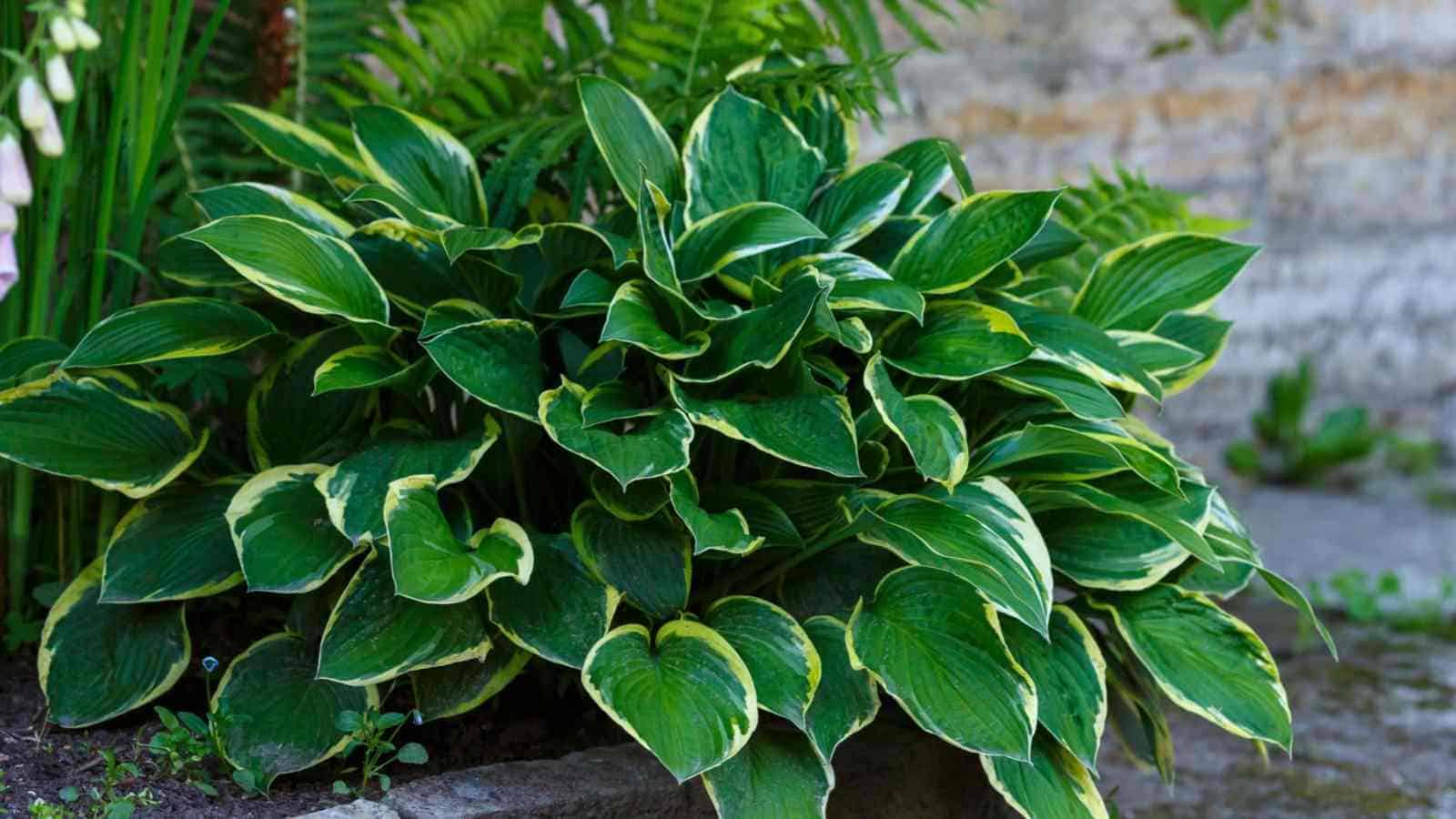
Keep in mind, even the hardiest crops need care. Frequent watering, mulching, and security from harsh winds can help your crops survive the winter. Moreover, take into consideration the microclimates in your yard, like shaded areas or wind tunnels, as they’ll have an effect on how correctly a plant tolerates chilly.
What Can I Cowl My Vegetation With To Cease Frost?
Defending your crops from frost is essential for his or her survival all through chilly winter months.
One environment friendly methodology is using a frost blanket, a lightweight materials designed to lure heat from the soil and preserve crops warmth. It is also attainable to make use of outdated mattress sheets or burlap as a cover.
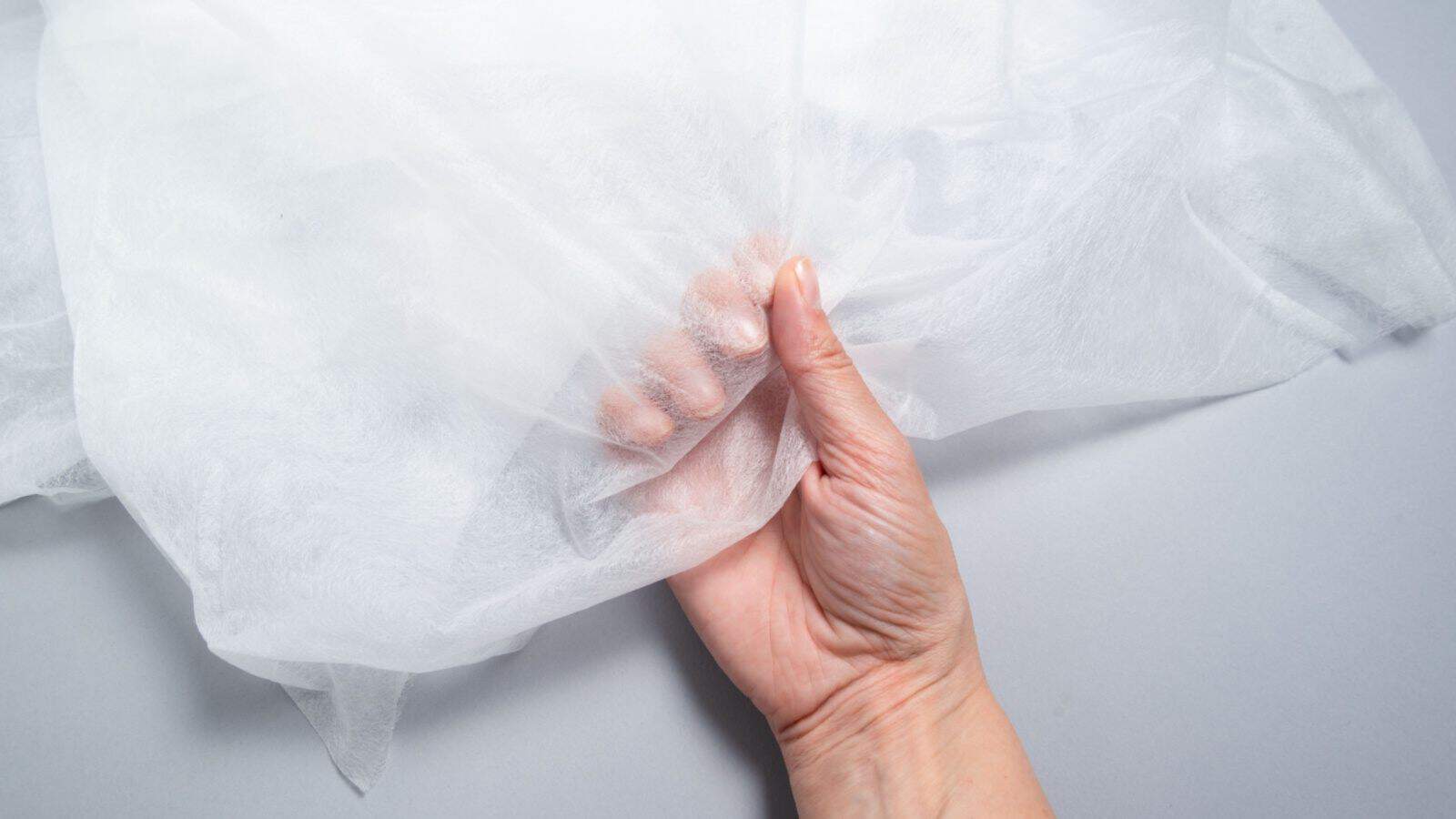
Nonetheless, it’s important to verify the material doesn’t contact the crops straight, as a result of the chilly can change by the use of the fabric and hurt the plant. Use stakes or frames to keep up the material elevated.
One other alternative is to utilize plastic sheeting or cloches for smaller crops. They work like mini greenhouses, trapping heat and humidity. Nonetheless, envisage to take away the plastic in the middle of the day to forestall overheating.
Lastly, mulching may even help forestall frost hurt. By spreading a thick layer of pure supplies like straw or wood chips throughout the plant, you probably can insulate the soil and defend the roots from freezing temperatures. Keep in mind, prevention is finest than treatment within the case of defending your crops from frost.
What Temperature Must I Cowl My Vegetation For Frost?
As a gardener, it’s essential to know when to protect your crops from frost. When temperatures are predicted to drop near or beneath freezing (32°F or lower), it’s time to cowl your crops. Frost might trigger very important hurt to your crops, significantly the tender ones that are delicate to chilly.
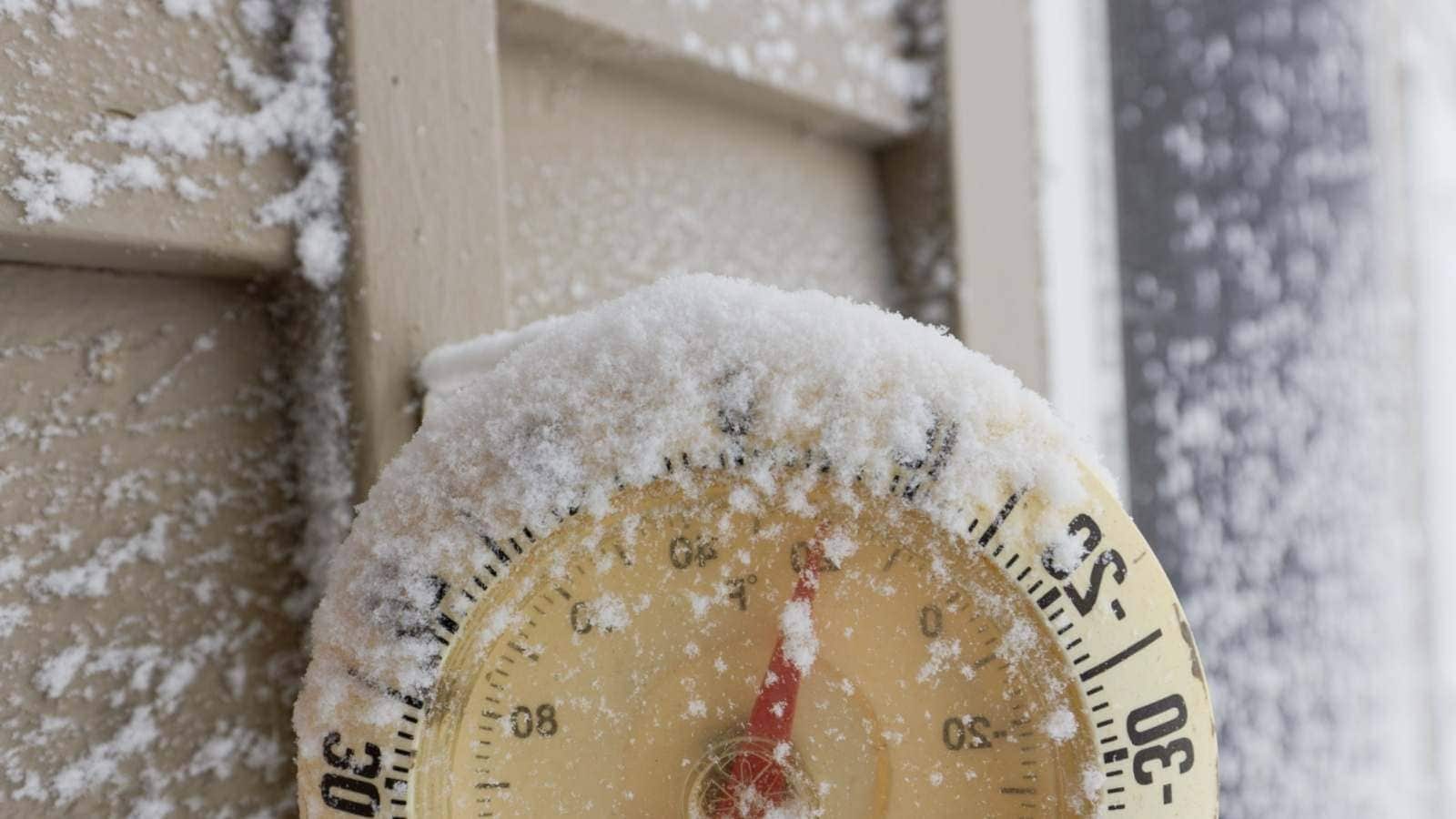
Defending your crops helps to lure heat rising from the underside, providing a defend in direction of the chilly air. Use frost cloths, outdated mattress sheets, burlap, and even plastic sheets for this goal. Nonetheless, envisage to take away the covers in the middle of the day as a result of the temperature rises to forestall overheating.
It’s moreover value noting that fully totally different crops have fully totally different frost tolerance ranges. Some can stand as much as lower temperatures, whereas others might have security even at better temperatures. Resulting from this truth, understanding the actual needs of your crops is significant to worthwhile frost security.
Can I Use Plastic Baggage To Cowl Vegetation From Frost?
Fully, you might want to use plastic baggage to protect your crops from frost. This technique is not solely cost-effective however moreover simple to implement. The plastic bag acts as a barrier, trapping heat from the soil and stopping the chilly air from reaching the plant.
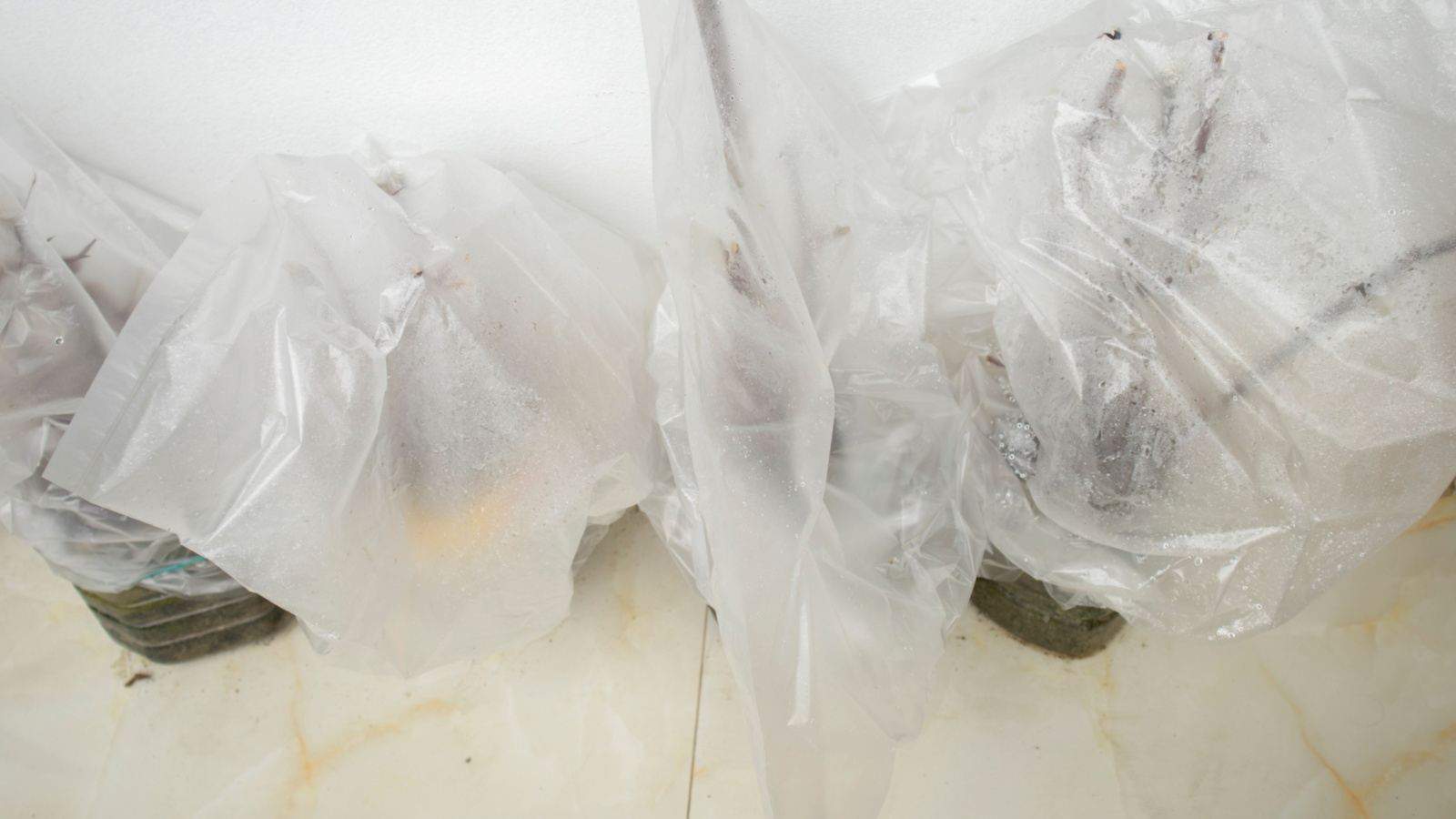
Nonetheless it’s vital to keep up a few points in ideas. Firstly, ensure that the plastic doesn’t contact the foliage because it may lead to frost hurt the place it contacts the leaves. You need to make the most of stakes to keep up the plastic off the plant.
Secondly, envisage to take away the plastic in the middle of the day to allow for daylight and air circulation. Prolonged overlaying might lead to overheating or suffocation of the plant.
In addition to, take heed to the type of plant. Some crops are frost-hardy and do not require overlaying, whereas others are frost-sensitive and need security. On a regular basis confirm the actual needs of your crops.
